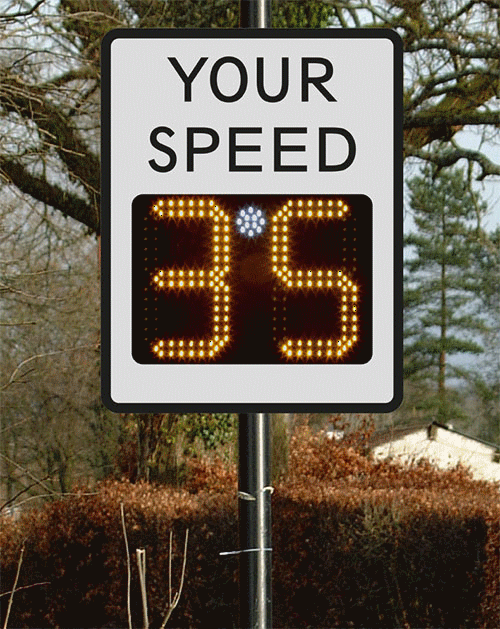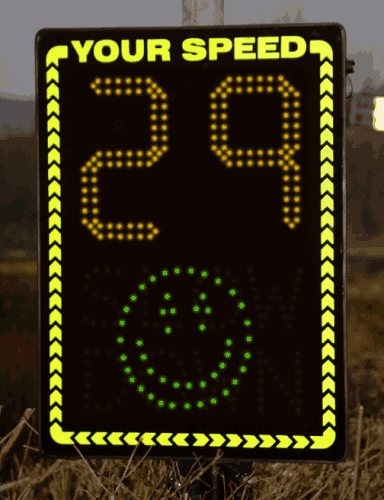Addressing Radar Speed Limit Sign Deployment’s Legal Challenges
Radar speed limit signs have revolutionized traffic management strategies worldwide, offering real-time feedback to drivers about their current speed. These signs, leveraging radar technology, promote road safety and encourage compliance with speed limits. However, the deployment of radar speed limit signs is not devoid of legal and regulatory intricacies. This comprehensive discourse delves into the multifaceted landscape surrounding radar signs, encompassing legal considerations, regulatory frameworks, technological advancements, and the evolving societal discourse.
Table of Contents
Understanding Radar Speed Limit Signs:
Radar speed limit signs, also known as radar speed signs or speed display signs, operate by detecting the speed of approaching vehicles through radar technology. Displaying the detected speed alongside the posted speed limit, these signs offer immediate feedback to drivers, prompting them to adjust their speed accordingly. The overarching aim of speed signs is to curb speeding behaviors and bolster road safety.

Key Benefits of Speed Limit Signs:
Before delving into the complexities, it is imperative to highlight the manifold benefits radar speed limit signs offer:
Enhanced Road Safety: Radar speed signs serve as proactive measures to mitigate speeding incidents, consequently enhancing road safety for all road users.
Traffic Calming: Deployed strategically, these signs act as effective traffic calming tools, particularly in areas prone to speeding or accidents, fostering a safer road environment.
Data-driven Insights: Many radar speed signs are equipped with data logging capabilities, enabling transportation authorities to gather valuable traffic data for analysis, informing future infrastructure planning and traffic management strategies.
Cost-effectiveness: In comparison to traditional enforcement methods like speed cameras or police patrols, radar speed limit signs often present a more cost-effective solution for managing traffic speed.

Legal Considerations:
Despite their efficacy, the deployment of radar speed signs is subject to a myriad of legal considerations, including:
Regulatory Compliance: Radar speed limit signs must adhere to established traffic regulations and standards stipulated by relevant authorities. These regulations encompass aspects such as sign placement, visibility, and accuracy requirements, ensuring uniformity and efficacy across deployments.
Enforcement Distinction: Depending on jurisdictional mandates, radar speed limit signs may serve educational purposes rather than enforcement mechanisms. It is imperative to delineate between educational and enforcement functions to preempt legal challenges.
Privacy Protocols: Radar speed signs integrated with cameras for enforcement purposes raise pertinent privacy concerns pertaining to the collection and retention of driver data. Legal frameworks must meticulously address these concerns, ensuring compliance with privacy laws and safeguarding individual rights.
Regulatory Frameworks:
Navigating the regulatory framework surrounding radar speed signs necessitates adherence to established standards and best practices, including:
Standards Adherence: Compliance with established standards such as the Manual on Uniform Traffic Control Devices (MUTCD) in the United States or equivalent standards globally is imperative to ensure the efficacy and legality of speed limit sign deployments.
Approval Protocols: Deployments typically necessitate approval from local transportation authorities or regulatory bodies. These approval processes entail comprehensive assessments of site suitability, sign placement, and potential traffic ramifications, ensuring adherence to regulatory mandates.
Calibration and Maintenance Regimens: Regular calibration and maintenance of speed limit signs are mandated by regulatory frameworks to uphold accuracy and reliability, thereby fostering trust and credibility among stakeholders and the public.
Legal Jurisdiction Clarification: Clarifying the legal jurisdiction responsible for regulating speed limit signs is crucial, particularly in scenarios where multiple jurisdictions intersect, necessitating streamlined coordination and cohesive enforcement strategies.

Technology Advancements:
The dynamic technological landscape presents both opportunities and challenges for radar speed limit sign deployments, including:
Smart Integration: Modern radar speed limit signs can be seamlessly integrated with smart transportation systems, facilitating remote monitoring, data analysis, and real-time adjustments to speed limits based on prevailing traffic conditions, thereby optimizing traffic flow and safety.
AI Integration: Leveraging artificial intelligence (AI) algorithms in speed signs enables advanced functionalities such as vehicle detection, anomaly identification, and predictive analytics, enhancing operational efficiencies and accuracy.
Legal Implications of AI: As speed limit signs evolve with AI capabilities, legal frameworks must evolve concomitantly to address potential issues encompassing algorithm transparency, accountability, and bias mitigation, safeguarding against legal pitfalls, and ensuring ethical deployment practices.
Data Security Imperatives: With heightened connectivity and data sharing capabilities, robust cybersecurity measures and data protection protocols are imperative to safeguard the security and privacy of data collected by the radar speed limit, averting potential breaches and ensuring compliance with data privacy regulations.
Conclusion:
Radar speed limit signs epitomize a pivotal tool in fostering road safety and promoting speed limit compliance. Nonetheless, navigating the labyrinth of legal and regulatory challenges surrounding their deployment necessitates meticulous attention to traffic regulations, privacy concerns, technological advancements, and legal precedents. By steadfastly adhering to established standards, engaging with relevant stakeholders, and embracing innovative solutions, transportation authorities can adeptly deploy speed limit signs, mitigating legal risks, and fostering a safer road environment conducive to the well-being of all road users.

